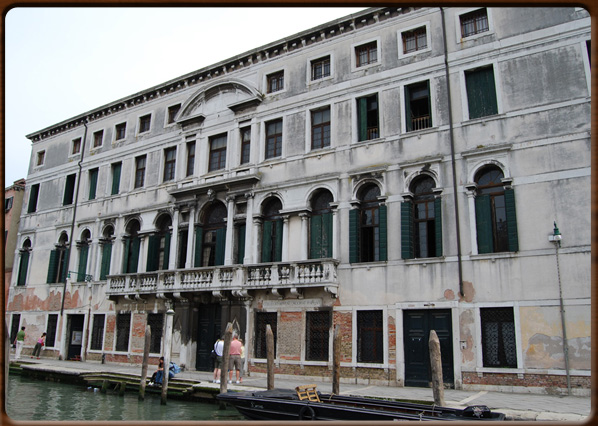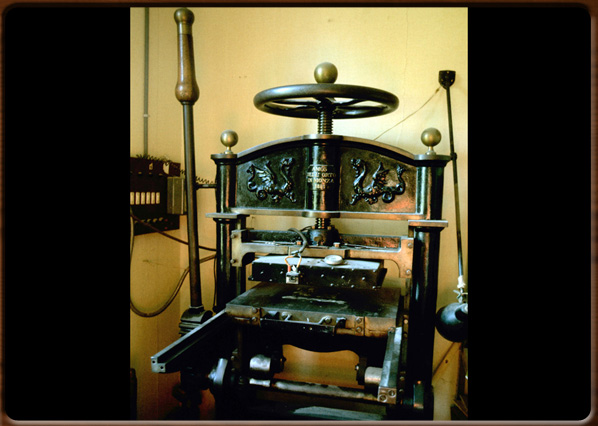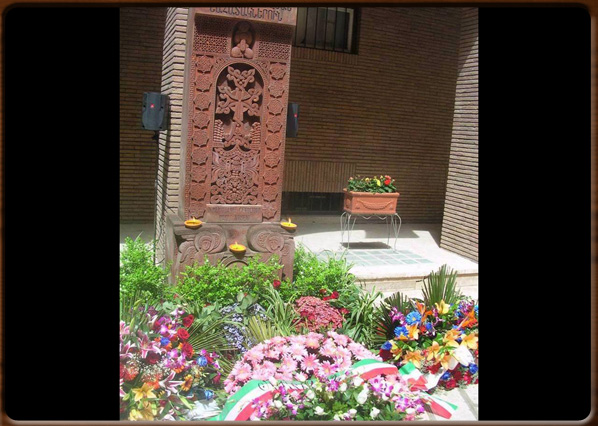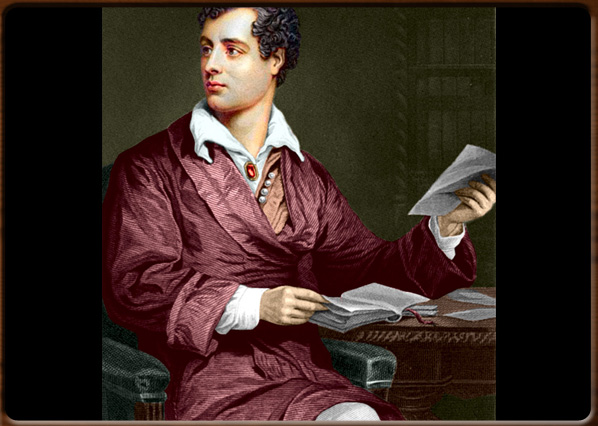
Zenobio Palace of the Armenians.

Ancient printing press conserved in the Armenian Museum.

Armenian bible.

Katchkhar in the cloister of the Monastry.

George Byron.





No video
The Venetian institution concerned with encouraging the Armenian culture is the Academia Sancti Lazar, established in the 1800s and today recognised as an important international academic foundation.
The San Lazzaro monastery, with its beautiful cloister and rose garden, has been one of the major centres of the Armenian diaspora.
Free to live and do business wherever they wished, the Armenians in Venice have thus been able to preserve their culture and their cuisine (based on pomegranates and roses, spicy confectionery and “fortune” loaves, fish and meat).
San Lazzaro is another symbol of their culture: like all Armenian monasteries, it has stone crosses (known as “khatchkars”) based an old artistic tradition and one of the most original religious customs of mediaeval Armenia. These khatchkars are used for memorial, celebratory and funeral purposes and are found standing on their own or in concentrations across large areas or depicted in hangings on the walls of religious buildings.
The Armenian culture in Venice is celebrated in the collections housed in the library, art gallery and museum at the San Lazzaro monastery run by the Armenian Fathers.
There are about 4,000 mostly Armenian manuscripts, codes and miniatures in the large library, works ranging from the 6th to the 18th Centuries, plus some 200,000 printed volumes, including various rare and valuable texts.
The Art Gallery has a collection of works by the Venetian and Armenian schools from 17th and 18th Centuries. The Museum holds archaeological examples of Armenian, Greek and Indian art, especially some fine sacred art by sixteenth and seventeenth-century Armenian artists, plus goldsmith’s art and ceramics. It also has an Egyptian mummy from 3,500 years ago, considered to be one of the best preserved in the world.
Another centre of Armenian culture and tradition in Venice is Palazzo Zenobio degli Armeni in the Dorsoduro district. Built in 1690, it became the seat of the College of the Armenian Mechitarist Fathers of San Lazzaro in 1850.
The poet George Byron, who so loved Venice, was also keen on Armenian culture: in 1816-1817 he often visited the small island of San Lazzaro, its monastery and the Mechitarist Fathers.
1600 - 1700 - - rev. 0.1.5